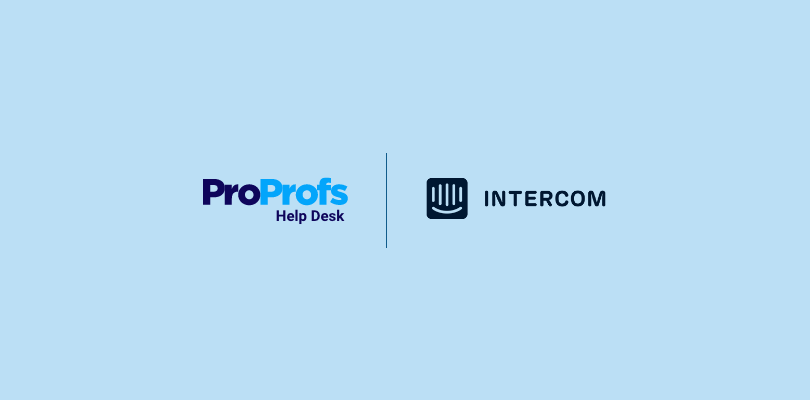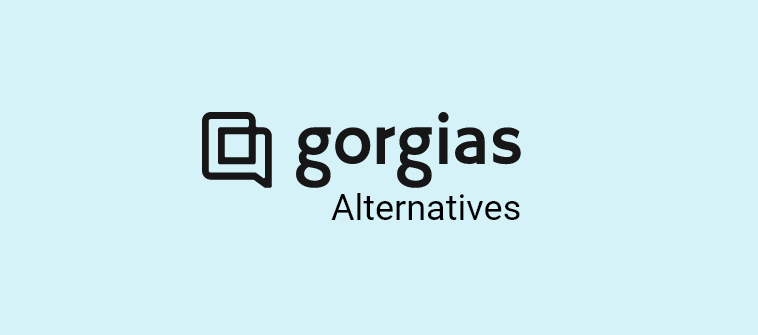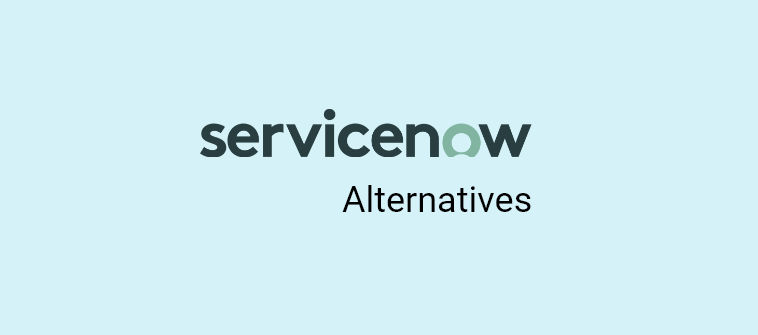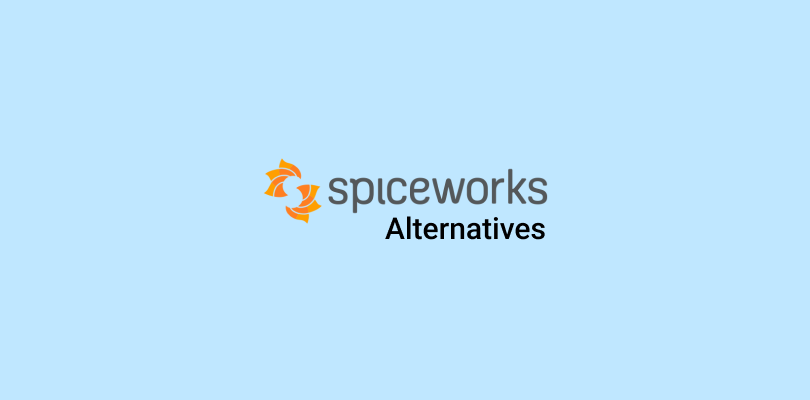Groove is a simple shared inbox tool that allows support agents to organize, prioritize and solve customer requests.
But can we consider it a full-fledged help desk system?
Not really!
My personal experience with the tool revealed numerous challenges — limited inboxes, unresponsive customer support, and the absence of the chatbot feature.
Allow me to guide you through 10 best-in-class Groove alternatives that can take your customer service game to the next level. In the following sections, I have shared each tool’s unique features, pros and cons, and pricing for an unbiased analysis.
10 Groove Alternatives That Deserve Your Attention in 2025
While Groove is a good ticketing system, sometimes it’s essential to see what else is out there to ensure you’re making the right decision for your business.
All the alternatives included in this blog have been a part of my team’s customer support suite during the course of the last eight years. While I have used most of these software systems myself, some were recommended to me by experienced colleagues and renowned industry experts.
1. ProProfs Help Desk – Best for Internal Collaboration
I always tell my team, “Customer service isn’t an individual sprint; it’s more like a relay race.”
ProProfs Help Desk is designed around the same philosophy of internal collaboration and team effort, and this is precisely why I consider it one of the best alternatives to Groove.
Right from smart collision detection and internal notes to ticket assignments, my support reps can collaborate effortlessly without stepping on each other’s toes.
We particularly use the parent-child ticketing feature to involve multiple departments in the support process. For instance, if a ticket is about delayed product delivery or broken items, a new child ticket can be created and assigned to the logistics team.
But that’s not all – ProProfs is also known for its omnichannel capabilities. Whether a customer reaches your team via email, phone, live chat, or your website, you can interact with them on multiple communication channels from one dashboard. Guess you can finally say goodbye to lost tickets and unhappy customers!
What you’ll like:
- Live chat integration to interact with customers in real-time and boost lead generation
- No-code chatbot development to assist customers with their basic queries 24/7
- Reports and analytics to monitor agent ratings, customer satisfaction, ticket resolution time, and other help desk metrics
- Native mobile apps for Android and iOS to resolve tickets on the move
What you won’t like:
- Frequent feature rollouts and updates can be confusing for some users
- More industry-specific canned responses should be added for enhanced efficiency
Pricing:
Starts at $20/user/month (Single plan inclusive of all premium features).
2. Zendesk – Best for Self-Service
I feel giving power into the hands of your customers is the best thing you can do for your business.
Why? Well, on the one hand, it boosts customer empowerment, and on the other, you can ease the load on your agents.
The Zendesk team has capitalized on this idea, evident in its powerful self-service capabilities. I used the tool to create a dedicated help center that allowed customers to find the assistance they needed at their own convenience.
Plus, we also built an online community forum where customers could interact with each other, discuss various help topics and product features, and raise their concerns. Such small yet impactful self-service features gave a boost to customer support efforts!
I’m sure you will also love Zendesk’s Agent Workspace feature, which provides contextual information to agents right at their fingertips.
What you’ll like:
- AI-powered bots help with sentiment analysis to better understand customers and their pain points
- Dedicated help center to reduce your ticket volume
- Zendesk seamlessly integrates with tools like Shopify, Mailchimp, and Slack
- Ticket escalations to avoid SLA breaches
What you won’t like:
- Ticket file attachment size is limited to 50 MB
- Zendesk’s subscription plans are quite expensive, making it an unsuitable option for small businesses
Pricing:
Starts at $55/user/month.
3. Freshdesk – Best for Customer Service Automation
I’ve had the chance to use Freshdesk, and I must say, it’s a fantastic help desk solution. It is designed to deliver a delightful customer experience, whether it’s through digital or traditional support channels.
I was intrigued by its automation capabilities, which made life easier for my agents. They could effortlessly assign tickets, tailor workflows to their needs, schedule reports, and keep track of their work.
What’s really cool is Freshdesk’s AI-powered chatbot named Freddy. These bots are seriously smart; they can understand a customer’s intent and provide instant guidance accordingly.
Whether it’s on chat or other channels, these bots can interact with customers, offering quick and relevant solutions or troubleshooting steps. Why worry when bots can do most of the work?
What you’ll like:
- Related tickets can be merged together for a quick and consistent support experience
- Customers and prospects can raise tickets directly from your website
- Time tracking to monitor the time spent resolving each ticket and calculate billable hours
- Agents can convert their ticket responses into help center articles
What you won’t like:
- An overwhelming number of features on the main dashboard can be confusing for first-time users
- Attaching image files to tickets takes a lot of time
Pricing:
Starts at $15/user/month.
4. Help Scout – Best for Easy-to-Scan Reports
Help Scout is another powerful Groove alternative that equips your team with all the tools they need to have meaningful conversations with customers.
Let me share my experience.
Right from day one, I was impressed with Help Scout’s reporting capabilities. Unlike other help desk tools, I could create reports for different communication channels like email, live chat, and phone.
Also, the tool made it a breeze to sort data using advanced filters. I suggest you save your custom views so your agents don’t have to create the same filters repeatedly.
Besides reporting and analytics, I like how Help Scout makes it possible to embed help articles directly on a website. This way, customers never have to leave the page to find an answer.
What you’ll like:
- A vast library of canned responses to share quick and consistent replies
- Agents can send private notes with @mentions to discuss complex support tickets with team members
- Instant ticket notifications in Chrome, Firefox, or Safari.
- User-specific reporting to understand customers better
What you won’t like:
- Just like me, many other users also feel that HelpScout’s customer support team isn’t responsive at times
- The Jira integration can slow down your system significantly
Pricing:
Starts at $20/user/month.
5. Intercom – Best for Proactive Support
I think Intercom has been designed very thoughtfully; kudos to their product development team.
It gives you the ability to assist customers on three different levels: human, self-serve, and proactive support. You can easily tackle those repetitive customer questions using the self-service features and even get ahead of potential complaints.
I feel the proactive messaging feature to be impressively unique. You can suggest important tips or keep your audience informed about scheduled outages without waiting for them to ask.
What I love about Intercom is how it promotes self-service across multiple platforms. We created some help articles and made them accessible via our website, mobile app, and product, allowing our customers to find answers independently.
What you’ll like:
- Interactive product tours to engage new customers and highlight new features
- Customer segmentation based on their spending or business type
- Chatbots can interact with website visitors and route chats to the right people in your team
- Android and iOS mobile apps to assist customers on the go
What you won’t like:
- Intercom’s pricing structure looks quite confusing
- The ‘Customer Surveys’ feature is only offered as an add-on and comes at an extra cost
Pricing:
Starts at $74/month.
6. SolarWinds Service Desk – Best for Incident & Asset Management
While searching for an internal help desk, SolarWinds Service Desk was recommended to me by a colleague. And within a few weeks, I was impressed with its incident and asset management capabilities.
I’m sure you will love how easy it is to convert a parent ticket into multiple child tickets. These child tickets can then be assigned to different departments (IT, admin, HR, etc.), allowing for organization-wide collaboration.
But that’s not all!
Solarwinds really shines in asset management. While using the tool, we could keep track of every IT asset within the organization. We found all crucial information in one place, including warranty details and license expiration dates.
What you’ll like:
- Comprehensive reports on agent performance and customer satisfaction indicators
- Ticket escalations to senior representatives or managers when SLAs are not met
- Agents can track all IT asset requests and complaints in one place
- SLA alerts and ticket notifications can be received via SMS text messages
What you won’t like:
- There is no feature to develop custom chatbots for your website
- SolarWinds Service Desk comes with steep learning curve
Pricing:
Starts at $39/user/month.
7. Zoho Desk – Best for Personalized Service
Every business is battling with this one question, “Who are our customers?”
I think Zoho Desk (along with its native integration, Zoho CRM) has the answer in store.
Zoho Desk is a context-aware help desk software that allows my team to use customer information to improve agent productivity and win customers with personalized conversations.
For instance, every time I open a ticket, I can easily view the customer’s contact information, their ticket history, purchases, and so much more.
If you have a global customer base and don’t have a support team that works round-the-clock, don’t worry. Zoho Desk will help you build a multi-brand help center and empower your existing as well as prospective customers to find solutions independently.
What you’ll like:
- Multi-brand help center to promote self-service
- AI-powered sentiment analysis to understand customer emotions and expectations better
- Online community forum to allow customers to raise concerns and discuss solutions
- Zoho CRM integration to bridge the gap between sales and support
What you won’t like:
- More industry-specific email response templates should be added
- Telephony features and capabilities are only available in the top-tier plans
Pricing:
Starts at $14/user/month.
8. TeamSupport – Best for Preventing Customer Churn
Do you wish to take a pulse on your customers and prevent churn?
If you answered yes, TeamSupport is all you need. The tool provided my team with all the necessary tools to monitor customer health scores, enhance support, and keep churn at bay.
What sets TeamSupport apart is its approach to customer service.
Instead of just treating customers as tickets, it provided additional insights into our audience and allowed us to view ticket history to identify trends.
And the Customer Distress Index™ feature has been a real eye-opener. It helped us pinpoint at-risk customers, make informed decisions, and ultimately reduce churn. It’s been a valuable asset for our customer support efforts!
What you’ll like:
- Powerful automation rules to route, escalate, and close support tickets easily
- Agents can easily find support articles to resolve customer issues quickly
- Real-time sentiment analysis to understand the tone of a customer response
- Internal chat function to discuss tickets and collaborate with other team members
What you won’t like:
- More chat widget designs should be added for enhanced branding and customization
- TeamSupport’s pricing is quite expensive compared to similar products
Pricing:
Starts at $49/user/month.
9. HubSpot Service Hub – Best for Omnichannel Support
When it comes to customer service channels, I think it’s the more, the merrier.
I got the opportunity to get my hands on HubSpot’s free plan and was impressed by its Universal Inbox feature.
Instead of tirelessly switching between channels, I could bring live chats, emails, Facebook messages, and survey feedback to one place. Nothing feels better than a tidy inbox, right?
But that’s not all – I converted my customers’ most frequently asked queries and requests into knowledge base articles, allowing them to resolve their basic concerns on their own.
As a free alternative to Groove, HubSpot offers built-in reporting tools to track how customers interact with your knowledge base articles and the overall interface. If you are a support manager, you can easily track key support metrics such as ticket volume, response time, customer satisfaction, and more to enhance the customer experience.
What you’ll like:
- In-built live chat tool to engage and assist customers on your website
- Powerful bots that can interact with customers and route them to the relevant agents
- Managers can create detailed reports on specific customer service metrics, such as ticket response time
- Customer satisfaction (CSAT) surveys to gather feedback and monitor the customer service experience
What you won’t like:
- Lacks the ability to convert live chat messages into tickets automatically
- The tool’s pricing structure may confuse new users
Pricing:
Starts at $450/month.
10. LiveAgent – Best for Live Chat
While email is great, your customer service suite is incomplete without the live chat feature. This is where LiveAgent comes to the scene!
With the help of its customizable chat widgets, you can offer one-click assistance, enhance engagement, and make it easier for customers to purchase from your brand.
I remember using this industry-leading live chat solution to automatically invite customers to chat based on their behavior, such as time spent on the website.
You can use it to automate manual tasks, boost internal collaboration, and make better business decisions based on data-driven insights. Also, I would recommend integrating LiveAgent with Mailchimp to manage subscriptions and revamp your email marketing efforts.
What you’ll like:
- Managers can track the time spent by customer service agents on each ticket
- Chat, feedback, and contact widgets can be set up in multiple languages
- Gamification features to motivate employees and reward them for their performance
- Channel reports to understand which communication channels are used the most
What you won’t like:
- The small business plan is limited to just three email inboxes
- There is no feature to develop your own chatbots
Pricing:
Starts at $9/user/month.
Which Is the Best Groove Alternative?
So, out of all the tools mentioned in this blog, which is the best Groove alternative? I wish I could offer a straightforward answer to this question. But that would be unfair.
It’s important to note that every business is unique, and the right alternative for you will depend on your customer service budget, technology requirements, existing tools, team size, and a dozen other factors. To further help you out, here are my top 3 picks:
Option A: ProProfs Help Desk
If you wish to give your support heroes the right platform to collaborate, work in sync, and make every interaction count, you can place your bet on ProProfs Help Desk. Unlike Groove, you can use this tool to build custom chatbots for your website, publish an online knowledge base, and share surveys to monitor the customer experience.
Option B: Help Scout
For support managers who wish to get into the nitty-gritty of reports and help desk metrics, I think Help Scout can be a good place to get started. You can create channel-specific reports to identify trends and dive into the data you need with advanced filters and custom views.
Option C: LiveAgent
LiveAgent won me over with its live chat feature, and I’m sure you will be equally impressed. You can customize the live chat widget to match your website aesthetics and boost lead generation. Besides this, you can also monitor your social media complaints and requests in one place.
Finally, if you are still undecided, I would recommend you try ProProfs Help Desk. It comes as a complete customer support suite that includes a powerful ticketing system, knowledge base, live chat, surveys, and more.
However, before you make any financial commitments, I would suggest you take a free trial and explore the interface and other capabilities on your own. If you have any further questions, scroll down to read these FAQs.
Learn More About Groove Alternatives
Q. How reliable is the customer support offered by these alternatives?
Some Groove alternatives are known for their impeccable customer service. For instance, ProProfs Help Desk offers 24×7 human support, where you can easily reach their team via email, live chat, website form, or phone support.
Q. How do alternative solutions compare in terms of pricing?
Groove starts at $12/user/month, which is considered an affordable pricing option. If we look at its top alternatives, they more or less fall in the same price bracket. For instance, ProProfs Help Desk costs $20/user/month, whereas Freshdesk starts at $15/user/month.
Q. How to choose the best Groove HQ alternatives
Here are some important points you can keep in mind for selecting the right alternative for your team:
- Identify Your Needs: Determine your specific customer support requirements, such as ticketing, knowledge base, or live chat.
- Compare Features: Research alternative help desk solutions, comparing features, pricing, and scalability.
- User Feedback: Read reviews and gather feedback from current users to assess reliability and user-friendliness.
- Integration: Ensure the chosen alternative integrates smoothly with your existing tools and systems.
- Cost Analysis: Analyze costs, factoring in scalability and potential hidden fees.
- Trial Period: Utilize free trials to test the alternatives before making a decision.
For more on this, watch: How to Choose the Best Help Desk Software
 Tips
Tips
We’d love to hear your tips & suggestions on this article!
FREE. All Features. FOREVER!
Try our Forever FREE account with all premium features!

 We'd love your feedback!
We'd love your feedback! Thanks for your feedback!
Thanks for your feedback!







